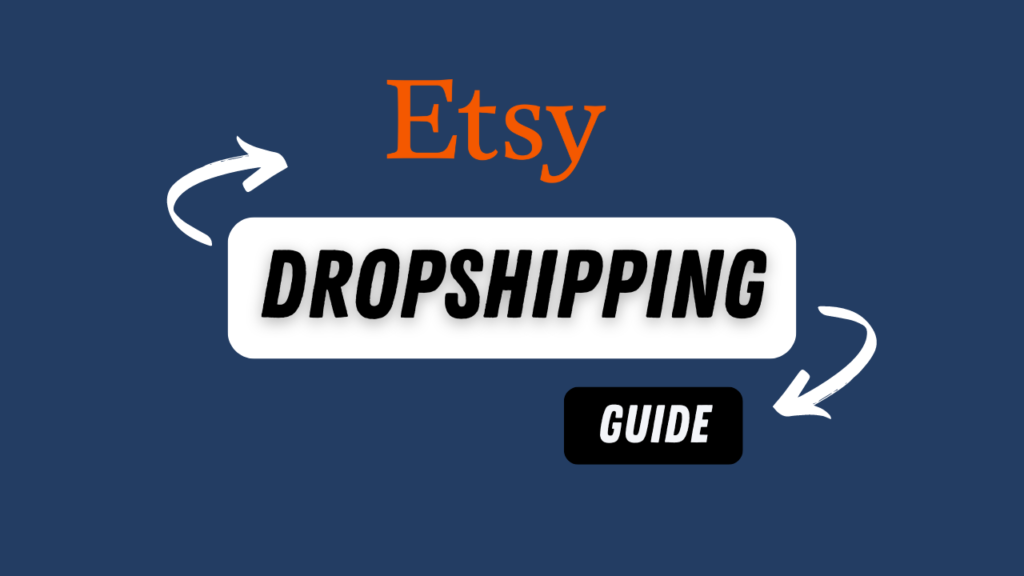Introduction to Dropshipping
Dropshipping is a business model that offers a simplified path to enter the ecommerce world. This model allows entrepreneurs to operate online stores without the need to manage or stock inventory physically. In dropshipping, the store owner sells products through their online platform. When a sale is made, instead of fulfilling the order from their own stock, the retailer purchases the item from a third-party supplier. The supplier then ships the product directly to the customer. This process effectively removes the need for the retailer to handle physical goods, thereby reducing the burden of inventory management and shipping logistics.
The dropshipping model is notably appealing for its low barrier to entry. Individuals can launch their own ecommerce store with significantly reduced upfront costs, as there is no need to invest in inventory or warehousing space. This aspect makes dropshipping an attractive option for new entrepreneurs and small businesses aiming to establish a presence in the online marketplace without substantial initial investments.
The economic impact and growth potential of dropshipping are highlighted by its market valuation and future projections. The market size for dropshipping was estimated at USD 281.35 billion in the year 2023. This figure is projected to experience a compound annual growth rate (CAGR) of 26.1% from the year 2024 to 2030, eventually reaching an estimated total of nearly USD 1426.44 billion. Such significant growth is indicative of the increasing adoption of the dropshipping model by online retailers. The method’s efficiency in facilitating the sale of products without the need for inventory storage has contributed to its popularity and success within the ecommerce sector.
By enabling entrepreneurs to sell a diverse range of products without directly managing the fulfillment and shipping processes, dropshipping provides a flexible and scalable approach to online retail. This business model supports the rapid development and expansion of ecommerce ventures by minimizing logistical challenges and overhead costs.
Dropshipping on Etsy
Etsy is recognized for its focus on providing a marketplace for handmade or vintage items and craft supplies. It caters to small businesses and artisans looking to sell unique products. With a substantial visitor count, averaging 377.4 million per month, Etsy hosts a diverse array of items, from jewelry and clothing to furniture and home decor. This variety attracts a wide audience, making it a fertile ground for sellers.
The platform is particularly open to dropshipping, a retail method where the seller does not keep goods in stock but instead transfers customer orders to a manufacturer or wholesaler, who then ships the goods directly to the customer. Etsy’s policies accommodate dropshipping under certain conditions, ensuring that the products sold align with its focus on uniqueness and creativity. Specifically, for products to be eligible for dropshipping on Etsy, they must be either crafted by hand, classified as vintage (at least 20 years old), or be craft supplies.
This unique approach to dropshipping on Etsy allows sellers to leverage the platform’s significant traffic while adhering to its guidelines for product offerings. It opens up opportunities for individuals to engage in ecommerce with a focus on handmade and vintage items, without the complexities associated with inventory management. By paying attention to Etsy’s product conditions, sellers can effectively participate in the dropshipping model while contributing to the marketplace’s diverse and unique catalog.
Etsy’s structure for dropshipping supports a seamless integration for sellers who wish to engage with the platform’s audience without the need for physical inventory. This model is especially beneficial for artisans and small business owners who specialize in handmade goods or have access to vintage items and craft supplies. By aligning their business operations with Etsy’s requirements, sellers can tap into a vibrant community of buyers seeking products that reflect personal tastes and individuality.
Costs Involved in Starting an Etsy Dropshipping Business
Initiating a dropshipping business on Etsy requires understanding the various costs involved. These expenses are pivotal for entrepreneurs planning to utilize the Etsy platform for their ecommerce ventures. Unlike traditional retail models that necessitate significant initial investments for inventory, the dropshipping model on Etsy presents a different financial structure centered around listing fees, transaction fees, and payment processing fees.
To begin, creating an account and setting up a shop on Etsy is free, making it accessible for individuals to start their business without upfront costs. However, once a seller decides to list a product, a fee of $0.20 per item is charged for every listing. This fee is applicable regardless of whether the product sells, and each listing remains active for four months or until the item sells, whichever comes first.
Once a sale occurs, Etsy applies a transaction fee of 6.5% on the sale price. This fee is a portion of the cost that the seller must account for when pricing their products, as it directly impacts the profit margin. Additionally, there is a payment processing fee that varies by the country of the seller’s bank. Generally, this fee includes a 3% charge of the total sale price plus a fixed fee of $0.25 per order. This fee is deducted from the total amount received from a sale, including the shipping cost charged to the customer.
These costs are essential considerations for anyone planning to start a dropshipping business on Etsy. Understanding and calculating these fees is crucial for setting appropriate price points for products, ensuring the business remains profitable. Sellers must factor in these costs when determining their pricing strategy to cover the expenses and achieve a satisfactory profit margin.
Financial Realities of Dropshipping on Etsy
Understanding the financial outcomes of dropshipping on Etsy is critical for anyone considering this business model. While there are stories of significant success and profitability, the financial landscape for Etsy sellers varies widely, reflecting a broad spectrum of income levels. A key insight into this variability is the income data reported by Etsy sellers, which reveals a wide disparity in earnings.
Etsy is still the best opportunity for dropshipping in 2024.
There is no platform that is as easy as Etsy to make 10k/month.
You won’t make 1 million a month with Etsy.
But you can easily scale to 5-10k months as a beginner and funnel the cash into other businesses.
— Daveyy (@DaveyDaveyyy) April 6, 2024
On one end of the spectrum, there are accounts of Etsy sellers achieving considerable financial success, contributing to the perception of Etsy as a lucrative platform for entrepreneurs. These success stories often serve as inspiration for new sellers, highlighting the potential for substantial income through careful strategy and market alignment.
However, it is crucial to approach these narratives with an understanding of the broader financial realities faced by the majority of Etsy sellers. According to data, while the average household income from Etsy sales stands at $56,000 annually, a significant portion of the seller community, up to 65 percent, earns less than $100 per year from their Etsy shops. This stark contrast underscores the challenges and competition within the marketplace, emphasizing that not all sellers experience high levels of financial success.
The factors contributing to such wide income disparities among Etsy sellers include market saturation, pricing strategy, product uniqueness, and marketing efforts. Success on Etsy is not solely about listing products; it involves strategic positioning, effective promotion, and the ability to distinguish one’s offerings in a crowded market. Sellers must navigate these complexities to achieve financial viability, understanding that substantial income may require sustained effort and strategic planning.
This disparity in income highlights the importance of realistic expectations for new sellers considering dropshipping on Etsy. While the platform offers the potential for success, achieving a significant income requires more than just setting up a shop and listing products. It demands a comprehensive approach that includes market research, unique product offerings, effective marketing strategies, and customer engagement.
Success Stories on Etsy
There are numerous accounts of Etsy sellers who have achieved significant success. These stories often serve as a beacon for new and aspiring sellers, showcasing what is possible through hard work, dedication, and a bit of creativity. One such narrative of success is that of Abby Misbin, a creator who has managed to carve out a niche for herself on Etsy with her unique sequin and mirror-coated cowboy hats.
Abby Misbin’s story is not just about creating a popular product but also about how a single moment can change the course of a business. Her cowboy hats gained widespread attention after being worn by a well-known celebrity. This event propelled her Etsy store into the limelight, resulting in a surge of interest and a waiting list that extended to 6,000 orders.
Operating from her basement in Pennsylvania, Misbin dedicates five to six hours to each hat, a process that includes not just the crafting but also the packaging and shipping. This level of commitment to her product and her customers has been a significant factor in her success. Misbin’s experience highlights the personal investment and the hands-on approach often required to thrive on Etsy. Despite the physical toll, such as the glue on her hands removing her fingerprints, Misbin’s passion for her craft remains undiminished. She loves what she does, and this passion translates into the quality of her products and the satisfaction of her customers.
The story of Abby Misbin on Etsy illustrates the potential for success within the platform. It underscores the importance of unique products, personal commitment, and the potential impact of external endorsements or viral moments. Misbin’s success is a testament to the idea that with the right product and a bit of luck, Etsy sellers can achieve remarkable results.
Etsy’s investment in the marketplace, including efforts to boost trust and safety, provides a supportive environment for sellers. This commitment by Etsy helps to ensure that the marketplace remains a place where unique and high-quality products can find an audience.
Stories like that of Abby Misbin serve as inspiration for current and future Etsy sellers, demonstrating that success is achievable with dedication and a focus on quality.
Trust and Safety on Etsy
Etsy’s commitment to creating a secure and trustworthy marketplace is evident in its significant investment towards enhancing safety and trust among its community of buyers and sellers. Last year, Etsy dedicated $50 million to efforts aimed at bolstering the platform’s integrity and reliability. This substantial investment underscores the importance Etsy places on maintaining a safe trading environment, which is crucial for the success of both the platform and its users.
One of the primary focuses of this investment has been the development and implementation of tools designed to automatically detect problematic listings. These advanced technologies play a crucial role in ensuring that the items available on Etsy meet the platform’s guidelines for handmade, vintage, and craft supply items. By proactively identifying listings that may not comply with these standards, Etsy is able to maintain the unique character of its marketplace, fostering a sense of trust among its user base.
This initiative is part of a broader strategy to enhance the overall user experience on Etsy. Trust and safety are foundational elements of any online marketplace, as they directly impact users’ willingness to buy and sell on the platform. For sellers, the assurance that their listings are part of a curated and protected marketplace makes Etsy an attractive platform for their business. For buyers, the confidence in purchasing from reputable and verified sellers ensures a positive shopping experience.
Etsy’s investment in trust and safety also reflects the platform’s response to the evolving challenges of e-commerce. As online marketplaces grow, so do the complexities of managing a vast array of listings and interactions between buyers and sellers. Etsy’s proactive measures to enhance safety and trust demonstrate its commitment to addressing these challenges head-on, ensuring the platform remains a preferred destination for unique, handmade, and vintage items.
Comparison with Other Platforms
Etsy and Shopify represent two distinct approaches to selling products online, each with its own set of features and target audiences. Etsy, known for its focus on handmade, vintage items, and craft supplies, caters to sellers and buyers who appreciate the uniqueness and personal touch of such products. This platform is a hub for those who are passionate about creating and purchasing items that carry a story or a special significance. Etsy’s community is built around the appreciation of the effort and creativity involved in creating these items, making it a go-to place for consumers looking to buy unique goods.
In contrast, Shopify offers a more generalized e-commerce platform that serves a broad range of sellers, including those dealing in handmade goods, apparel, jewelry, and more. Shopify allows its users to create customized online stores, providing them with the tools and flexibility to build their brand and manage their sales. This level of control and customization is appealing to entrepreneurs and businesses looking to scale their operations and establish a strong online presence.
The key difference between Etsy and Shopify lies in the nature of the marketplace and the level of control offered to sellers. Etsy provides a curated marketplace where the items for sale must fit into specific categories, such as handmade or vintage. This creates a specialized shopping experience but also limits the types of products that can be sold. Sellers benefit from access to a dedicated audience looking for these specific types of items, which can be advantageous for those whose products align with Etsy’s criteria.
Shopify, on the other hand, does not impose restrictions on the types of products that can be sold through its platform. This opens up a world of possibilities for sellers, allowing them to offer a wider variety of goods and services. Shopify’s model is designed to give sellers the tools they need to create a standalone online store, complete with its branding and design. This approach is suited to sellers who wish to have complete control over their online selling environment and are looking to build a comprehensive brand identity.
Choosing between Etsy and Shopify ultimately depends on the seller’s specific needs, the type of products they intend to sell, and how they wish to interact with their customers. For artisans, crafters, and collectors of vintage items, Etsy offers a platform that celebrates the uniqueness of handmade and vintage goods, connecting them with a like-minded community. For those looking to launch a more diverse range of products and desire greater control over their online store’s appearance and functionality, Shopify provides the necessary infrastructure and flexibility to grow and expand their business.
Getting Started with Dropshipping on Etsy
Launching a dropshipping business on Etsy involves several steps that cater to the platform’s unique marketplace and audience. Etsy’s environment, known for handmade, vintage items, and craft supplies, provides a unique opportunity for sellers interested in these categories. Starting a dropshipping business on Etsy involves understanding the platform’s specific requirements and leveraging its community to reach potential customers interested in unique and creative products.
The first step in establishing a dropshipping venture on Etsy is to open an Etsy storefront. This process involves creating a seller account on Etsy, which is a straightforward procedure that guides new sellers through setting up their shop. This initial step is critical as it forms the foundation of your business on the platform. During the setup process, sellers are encouraged to think carefully about their shop name, branding, and the types of products they plan to offer. This stage is crucial for establishing a presence on Etsy and beginning to connect with the platform’s vast audience of buyers interested in unique items.
Once the storefront is set up, the next step involves outsourcing the production of your goods, which is a core component of the dropshipping model. This step requires finding reliable suppliers who can produce high-quality products that meet Etsy’s handmade or vintage criteria. For dropshippers, this often means collaborating with artisans or manufacturers who specialize in custom-made items or sourcing vintage goods that can be resold. The selection of products to sell is a critical decision that should align with Etsy’s ethos and the interests of its community.
In addition to setting up the storefront and selecting products, Etsy sellers can also consider sourcing products from Etsy to sell in their online storefront. This approach involves identifying potential best-sellers on Etsy that fit within the dropshipping model and negotiating with the original creators or suppliers to fulfill orders. This method requires careful coordination and agreement on terms that respect the original creators’ work while allowing for a profitable dropshipping operation.
To streamline the dropshipping process and ensure a smooth operation, sellers can explore working with approved Etsy dropshipping partners. These partners include Printify, Art of Where, and AutoDS, each offering specific services that facilitate the dropshipping process on Etsy. Printify allows merchants to sell dropshipped print-on-demand products featuring the merchant’s designs, making it a great option for sellers looking to offer personalized items. Art of Where provides a similar service with additional customization options for labels and stickers, enhancing the branding of the products. AutoDS supports merchants in sourcing products from Etsy to sell via their branded Shopify store, offering a bridge between Etsy and other online selling platforms.
By following these steps and utilizing the resources available, sellers can establish a successful dropshipping business on Etsy. The key is to align with Etsy’s community and values by offering products that resonate with the platform’s audience. With careful planning, a focus on quality, and strategic use of dropshipping partners, sellers can tap into Etsy’s vast market of buyers looking for unique, handmade, and vintage items.
Partners and Tools for Etsy Sellers
For sellers looking to streamline their dropshipping operations on Etsy, utilizing the services of approved dropshipping partners and tools can significantly enhance efficiency and profitability. These partners provide valuable resources for managing the complexities of dropshipping, from product creation to fulfillment, ensuring that sellers can focus on growing their business and connecting with their audience on Etsy.
Printify is one of the leading dropshipping partners recommended for Etsy sellers. This platform specializes in print-on-demand products, allowing sellers to create custom designs that are then printed onto a variety of items, from clothing to home decor. Printify‘s integration with Etsy simplifies the process of listing these products in an Etsy shop, automating order fulfillment directly from Printify to the customer. This partnership is ideal for sellers interested in offering personalized or custom-designed products without the need for upfront inventory.
Art of Where offers a similar dropshipping service with a focus on print-on-demand products, but with additional options for customization. Sellers can use Art of Where to create unique products with custom labels and stickers, enhancing the branding of their items. This level of customization is particularly appealing for Etsy sellers, as it aligns with the platform’s emphasis on unique and personalized products. Art of Where’s integration with Etsy facilitates seamless order fulfillment, allowing sellers to offer a wide range of customized products without managing the production process.
AutoDS serves as a tool for sourcing products from Etsy to sell via a branded Shopify store. This approach allows sellers to leverage the diverse range of products available on Etsy, identifying items that complement their brand and can be sold through their Shopify storefront. AutoDS automates the process of listing these items and managing orders, providing a bridge between Etsy’s marketplace and the seller’s Shopify store. This tool is valuable for sellers looking to expand their product offerings and explore cross-platform selling strategies.
By partnering with these dropshipping services, Etsy sellers can access a range of tools and resources designed to facilitate the dropshipping process. These partnerships enable sellers to expand their product offerings, automate order fulfillment, and enhance their brand presence on Etsy. The integration of these tools with Etsy’s platform ensures a smooth operation, allowing sellers to focus on marketing their products and engaging with their customers.
Setting up a dropshipping business on Etsy requires careful planning and consideration, starting with the selection of products that align with Etsy’s community values. Entrepreneurs must navigate the costs associated with listing and selling products, balancing these expenses with strategic pricing to ensure profitability. Understanding the financial realities of the marketplace is crucial, as income can vary widely among sellers. However, success stories on Etsy serve as a testament to the platform’s potential for those who find their niche and connect with their audience.







No comment yet, add your voice below!